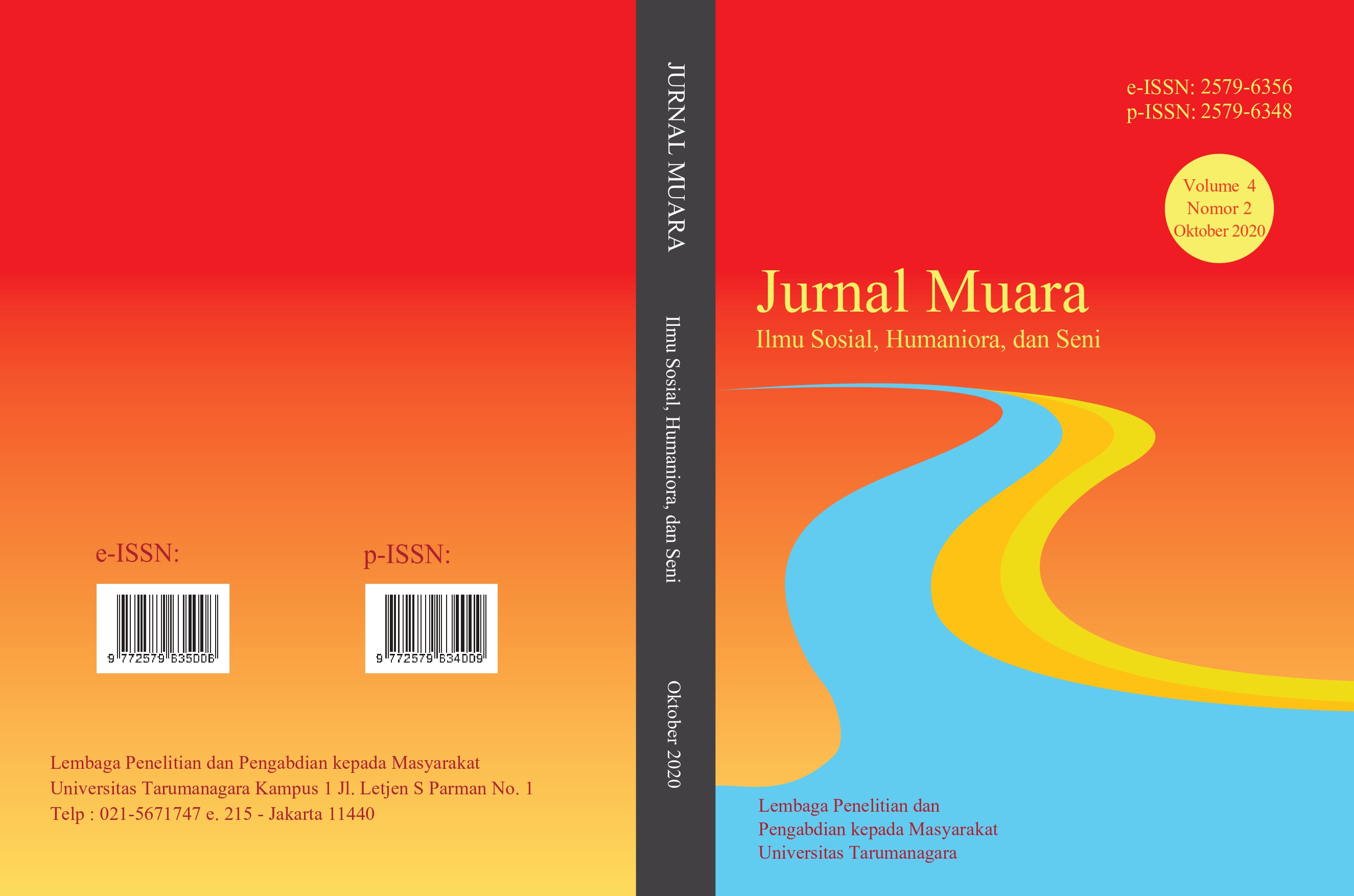HUBUNGAN RELIGIUSITAS DAN REGULASI EMOSI SISWA SEKOLAH DASAR
Main Article Content
Abstract
Emotional regulation is an individual’s ability to regulate emotions. Individual regulate his/her emotion to be able to control his/her life. In practice, the ability of emotional regulation can be influenced by various factors. One of the factors that can influence the process of emotional regulation is the level of religiosity. In this study, researchers aimed to be able to see the relationship of students’ religiosity on emotional regelation possessed by students. This study involved 319 elementary school students in SD X. Participants were given a set of assessments to measure the level of religiosity and emotional regulation. Religiosity is measured by using the Dimension Religiosity Scale to measure preoccupation, conviction, emotional involvement, and guidance. To measure emotional regulation, researchers used the Emotion Regulation Questionnaire for Children and Adolescent (ERQ-CA) to measure the level of cognitive reappraisal and expressive suppression possessed by students. Data was analysised using correlation test in SPSS version 23. From the results of the correlation test conducted found that there is a significant relationship between the variables of religiosity and emotional regulation (r = 0.248, with p < 0.05). This shows that if the level of religiosity students have is high, the ability of students to regulate emotions will be better.
Regulasi emosi adalah suatu kemampuan individu dalam mengatur emosi. Setiap orang melakukan regulasi emosi untuk dapat mengendalikan hidupnya. Dalam praktiknya, kemampuan regulasi emosi dapat dipengaruhi oleh berbagai faktor. Salah satu faktor yang dapat mempengaruhi proses regulasi emosi adalah tingkat religiusitas yang dimiliki individu tersebut. Dalam penelitian ini, peneliti bertujuan mengkaji hubungan antara religiusitas siswa dengan regulasi emosi yang dimiliki oleh siswa. Penelitian ini melibatkan 319 siswa-siswi Sekolah Dasar di sekolah X. Partisipan diberikan satu set asesmen untuk mengukur tingkat religiusitas dan regulasi emosi. Religiusitas diukur dengan menggunakan Dimension Religiousity Scale untuk mengukur preoccupation, conviction, emotional involvement, dan guidance. Untuk mengukur regulasi emosi, peneliti menggunakan Emotion Regulation Questionnaire for Children and Adolescent (ERQ-CA) untuk mengukur tingkat kemampuan cognitive reappraisal dan expressive suppression yang dimiliki oleh siswa. Analisis data menggunakan uji korelasi dengan menggunakan SPSS versi 23. Dari hasil uji korelasi yang dilakukan, didapatkan bahwa ada hubungan yang signifikan antara variabe religiusitas dan regulasi emosi (r = 0,248, p < 0,05). Hal ini menunjukkan bahwa makin tinggi tingkat religiusitas yang dimiliki siswa, maka makin tinggi pula kemampuan siswa dalam meregulasi emosi.
Article Details
References
Bekerman, Z., & Zembylas, M. (2018). Emotion, emotional intelligence, and motivation: Psychologized language in education. New York, NY: Palgrave Macmillan.
Diener, E., Tay, L., & Myers, D. G. (2011). The religion paradox: If religion makes people happy, why are so many dropping out?. Journal of Personality and Social Psychology, 101(6), 1278-1290. doi: 10.1037/a0024402
Etkin, A., Egner, T., & Kalisch, R. (2011). Emotional processing in anterior cingulate and medial prefrontal cortex. Trends in Cognitive Sciences, 15(2), 85-93. doi:10.1016/j.tics.2010.11.004.
Ford, B. Q., & Gross, J. J. (2018). Emotion regulation: Why beliefs matter. Canadian Psychology/Psychologie canadienne, 59(1), 1–14. https://doi.org/10.1037/cap0000142
Gross, J. J. (1998). The emerging field of emotion regulation: An integrative review. Review of General Psychology, 2(3), 271–299. doi:10.1037/1089-2680.2.3.271
Gross, J. J., & John, O. P. (2003). Individual differences in two emotion regulation processes: Implications for affect, relationships, and well-being. Journal of Personality and Social Psychology, 85(2), 348–362. https://doi.org/10.1037/0022-3514.85.2.348
Gullone, E., & Taffe, J. (2012). The emotion regulation questionnaire for children and adolescents (ERQ–CA): A psychometric evaluation. Psychological Assessment, 24(2), 409-417. doi:10.1037/a0025777
Hurlock, B. (2013). Perkembangan anak (edisi keenam). Jakarta: Erlangga.
Joseph, S., & DiDuca, D. (2007). The dimensions of religiosity scale: 20-item self-report measure of religious preoccupation, guidance, conviction, and emotional involvement. Mental Health, Religion & Culture, 10(6), 603–608.doi:10.1080/13674670601050295
Pennequin, V., Questel, F., Delaville, E., Delugre, M., & Maintenant, C. (2019). Metacognition and emotional regulation in children from 8 to 12 years old. British Journal of Educational Psychology, 1-16. https://doi.org/10.1111/bjep.12305
Roseman, L., Demetriou, L., Wall, M. B., Nutt, D. J., & Carhart-Harris, R. L. (2017). Increased amygdala responses to emotional faces after psilocybin for treatment resistantdepression. Neuropharmacology, 142, 263-269 doi:10.1016/j.neuropharm.2017.12.041
Sharp, S. (2010). How does prayer help manage emotions?. Social Psychology Quarterly, 73(4), 417-437. doi: 10.1177/0190272510389129
Vishkin, A., BigMan, Y., & Tamir, M. (2014). Religion, emotion regulation, and well-being. In C. Kim-Prieto (Ed.). Positive psychology of religion and spirituality across cultures, 9, 247-269. https://doi.org/10.1007/978-94-017-8950-9_13



